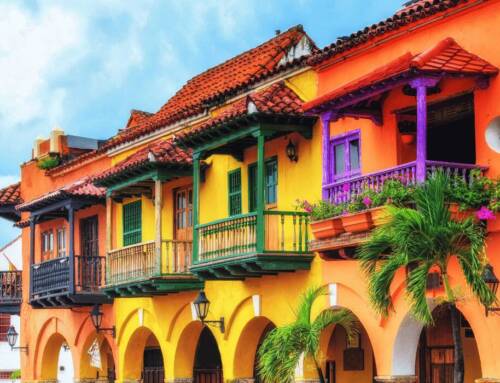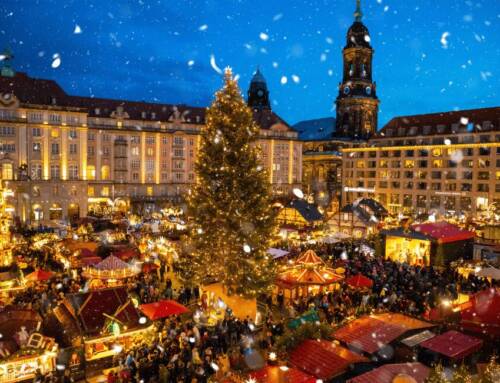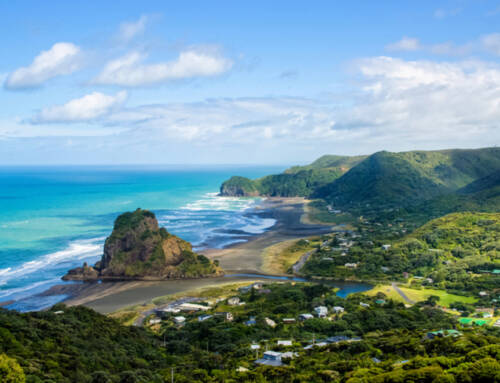Argentina fascinates everyone who visits. Those who have traveled there try to return at the first opportunity, drawn back by its endless charms. Without a doubt, Argentina is a must-see destination — one of South America’s true gems, a unique country that moves, captivates, and seduces millions of people around the world.
Perhaps the main reason for this fascination lies in the country’s vast size paired with its incredible diversity. Argentina is immense and, at the same time, complex and rich — filled with contrasts. That’s what makes it seemingly inexhaustible. It’s difficult to define a typical Argentine landscape, because Argentina has them all. What best captures its essence? The continental ice fields? The Andes Mountains? Its picture-perfect lakes? The jungle and its waterfalls? Each of these on their own — and all of them at once.
Its geography is so varied that deciding what to see in Argentina requires some planning. You have to think carefully and organize your trip to get the most out of this wonderful country. That’s why this article provides a comprehensive overview of Argentina’s most stunning natural attractions — what places to visit, the best ways to experience them, and the most suitable times of year to go. Everything is laid out from north to south, giving you a clear roadmap to plan your journey in the best possible way.
Travel insurance for Argentina
Index
- What should you visit in Argentina?
- The colors of the North
- Cerro de los Siete Colores (Hill of Seven Colors)
- Quebrada de Humahuaca
- The Enchantment of the Jungle
- Buenos Aires, a global city
- The route of the 7 lakes
- Lake Nahuel Huapi
- The most beautiful city on the Patagonian coast
- The power of the Glaciers
- Los Glaciares National Park
- Perito Moreno Glacier
- The beauty at the end of the world: Ushuaia
- Sailing the Beagle Channel
- How many days are needed to see Argentina?
- What to see in Argentina in 5 days
- What to see in Argentina: the most interesting provinces to visit
- How many days are recommended in Buenos Aires?
- What is the best time to travel to Argentina?
- Is it safe to travel to Argentina?
- Discover Argentina safely with Heymondo
What should you visit in Argentina?
Few countries can boast of having all the natural wonders of the world. Argentina is one of them. All climates, all terrains, all kinds of wildlife — and to top it off, a population shaped by immigration from all over the globe.
Your first time in Argentina is an explosion of unique sensations. The experience of seeing Perito Moreno Glacier or Iguazú Falls for the first time is unforgettable, unmatched, and nearly impossible to put into words. That’s why these two places are the country’s most visited and most beloved by travelers from around the world.
Then there’s the vast Andes mountain range, which includes the colorful, mountainous northern landscapes where indigenous communities still preserve ancestral traditions. Music and local customs are deeply rooted in daily life here. But the Andes reveal many faces: further south, in Patagonia, the landscape turns crystalline blue, home to some of the world’s most beautiful lakes, nestled among wooden houses, forests, and breathtaking panoramic views.
And of course, there’s Buenos Aires — a global capital, not just an Argentine one — with its vibrant nightlife, theaters, cinemas, and pizzerias, where football and street life pulse from morning to night.
Finally, there’s Ushuaia, the southernmost city in the world. A must-see in Argentina, a visit there truly feels like traveling to the ends of the Earth — to a beauty that is unmatched.
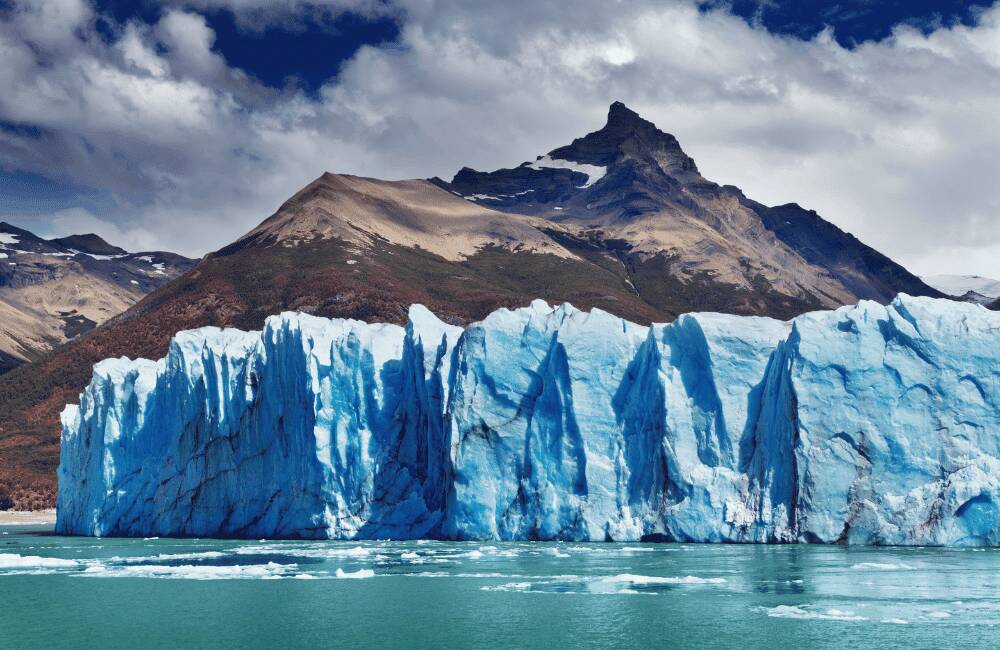
The colors of the North
Northern Argentina is one of the country’s most distinctive and picturesque landscapes, unlike anything found farther south. It is home to the largest number of indigenous communities (even the Inca Empire once extended its reach into this region), and many centuries-old traditions remain alive to this day, some dating back to colonial Spanish times.
This part of the country is also a spectacle of colors and elevations, thanks to the Andes’ offshoots and the mineral-rich soil that paints the geography in vivid shades. It’s a perfect place to enjoy nature, traditional music, and regional dishes like humita and tamales, both made with corn and potatoes — staple ingredients of indigenous cuisine that are still central to the local gastronomy.
Cerro de los Siete Colores (Hill of Seven Colors)
As the day progresses and sunlight hits the hills of the provinces of Tucumán, Salta, and Jujuy, the colors shift in surprising ways. It’s nature putting on a grand show. The highlight of this natural wonder is the Cerro de los Siete Colores, located on the outskirts of the beautiful town of Purmamarca in Jujuy. Believed to be over 75 million years old, its seven colors were formed by layers of sediment built up over different geological eras. Shades of pink, whitish tones, browns, reds, greens, earthy hues, and yellows cover this mountain, which is beloved by locals and visited by millions from around the world.

Quebrada de Humahuaca
But the Hill of Seven Colors wouldn’t exist without the Quebrada de Humahuaca — the valley that surrounds it and many other Andean hills and mountains over more than 150 kilometers within Jujuy Province. Declared a UNESCO World Cultural Heritage Site in 2003, it is home to beautiful, picturesque small towns, a region where the Quechua language remains vibrant, and a former trade route of the Inca Empire. It’s a place rich in natural beauty and deep cultural history.
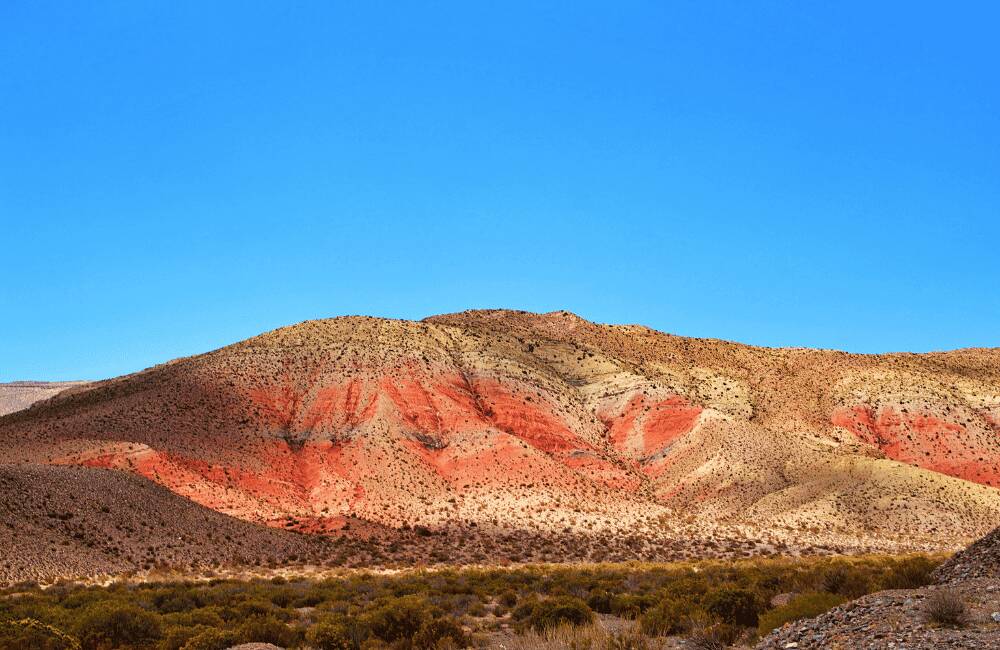
The Enchantment of the Jungle
Few places in the world are as mysterious as the jungle. The humidity, the invisible sounds, the stillness at dusk, and the intense shades of green. In Argentina’s Misiones Province, the jungle reaches its most magnificent expression, enhanced by the picturesque red soil and the famous Iguazú Falls — arguably the most thrilling natural spectacle in Argentina. One and a half million liters of water plunge down every second, crashing against the rocks, the mist rising and forming ghostly, beautiful walls of water, all surrounded by the lush green of Iguazú National Park. This is one of Argentina’s most visited destinations by international tourists — a perfect opportunity to sail between waterfalls and get up close with the jungle’s native wildlife.
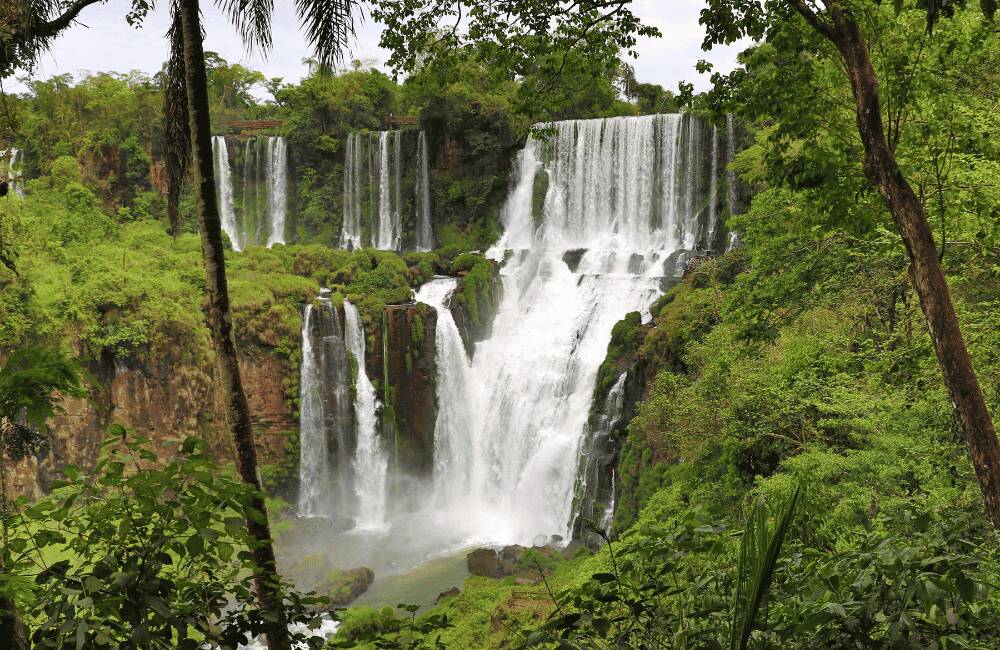
Buenos Aires, a global city
Argentina’s capital city deserves a trip of its own. But if time is limited, and you want to make the most of your stay, Buenos Aires offers endless things to do and places to explore, all year round. Whether you’ve just landed or are about to fly out, it’s well worth diving into its oldest neighborhoods — like San Telmo, La Boca, or Boedo — or the trendier districts like Palermo or Recoleta. You can stroll along Avenida 9 de Julio (known as the widest avenue in the world), admire the beautiful architecture along Avenida de Mayo, or grab a slice of pizza on Corrientes Street.

The route of the 7 lakes
Continuing south across Argentina’s vast map, we return to the Andes, this time to explore their Patagonian stretch through one of the country’s most scenic drives: the Route of the 7 Lakes. This name refers to a 107-kilometer section of National Route 40, connecting the cities of San Martín de los Andes and Villa La Angostura, and along which seven lakes can be seen: Lácar, Machónico, Falkner, Villarino, Lago Escondido, Correntoso, and Espejo. These are visible directly from the main road, but there’s much more beauty in the region if you’re willing to explore some side roads.
Lake Nahuel Huapi
Other lakes — like Traful, Espejo Chico, or Meliquina — can also be visited from the Route of the 7 Lakes by taking detours off the main highway. But if you only take one, without a doubt the most worthwhile is Lake Nahuel Huapi, accessible via Route 231 heading toward the Cardenal Samoré Pass. This is a vast glacial lake shared by the provinces of Neuquén and Río Negro. Its striking blue color, its islands, and one of its major arms along which the famous city of Bariloche is located, make it one of the most visited lakes in Argentine Patagonia.
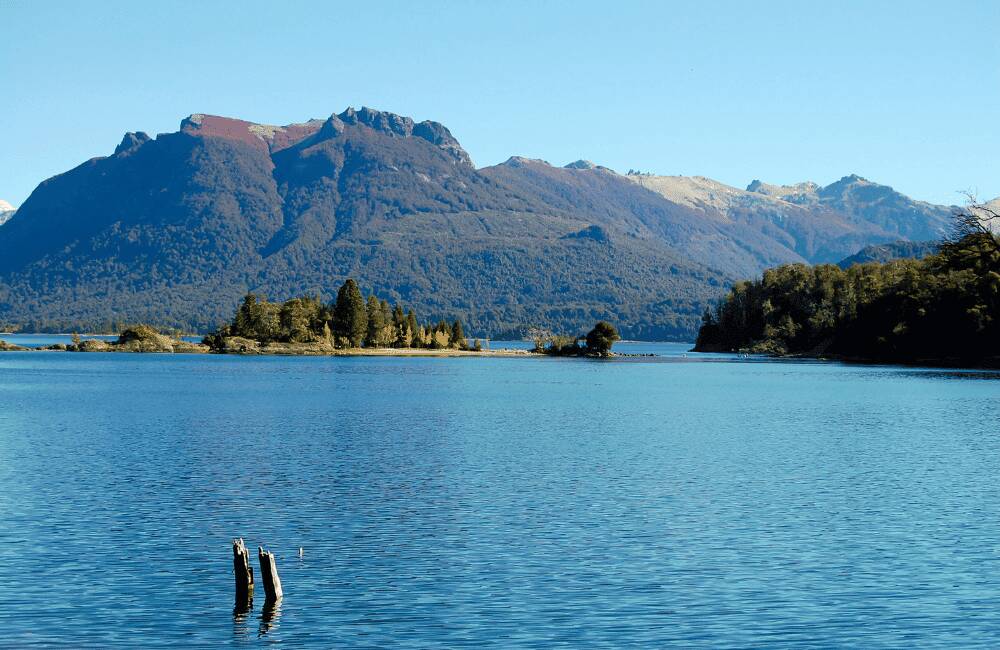
The most beautiful city on the Patagonian coast
A bit farther south but on Argentina’s eastern side, along the Atlantic Ocean, lies what is widely considered the most beautiful city on the Patagonian coast: Puerto Madryn. Its fame, however, isn’t just due to its charm — which visitors consistently celebrate — but also because of its proximity to the Valdés Peninsula. Along its extensive coastline, whales can be spotted; they arrive here each May to reproduce and remain until December to care for their calves. Especially in August, September, and October, it’s possible to see many southern right whales, which can grow up to 17 meters long.
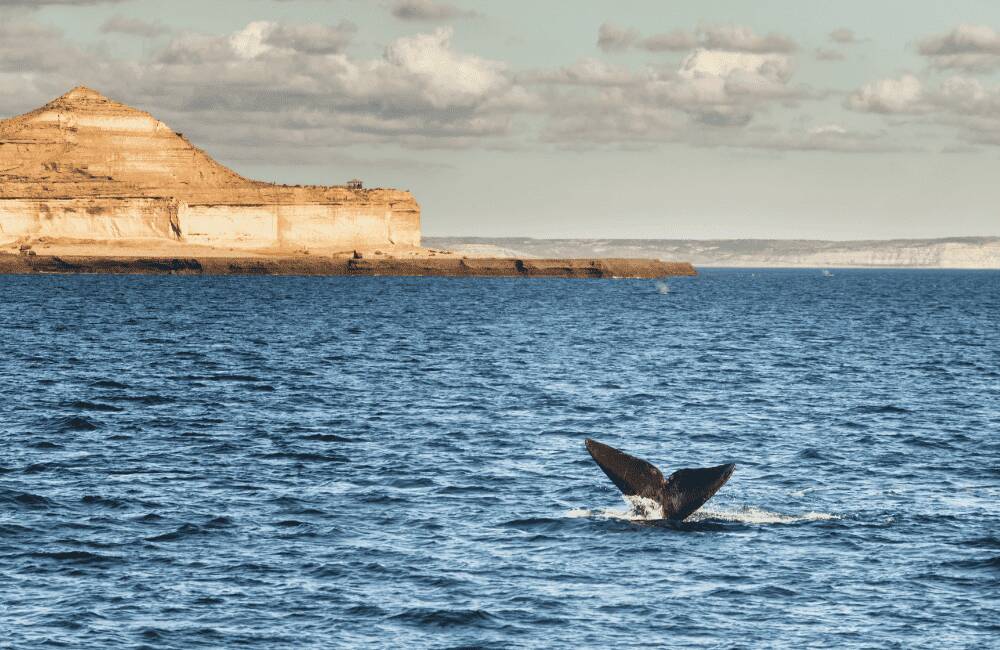
The power of the Glaciers
We now return to the western part of the country, going even farther south, where the cold intensifies and condenses into massive sheets of ice around Lake Argentino — the largest lake in Argentina. This immense body of water stands out for its unique turquoise-gray color. It’s located in Santa Cruz Province, and on its shores sits the city of El Calafate, the hub for two essential visits on this side of Argentina.
Los Glaciares National Park
Named for its collection of around 1,000 glaciers, the park’s most famous is Perito Moreno. But others like Upsala and Spegazzini are equally stunning. There are also what are known as dry glaciers, such as Haim, which form on the mountain slopes surrounding the lake and do not originate from the waters of Lake Argentino itself. All of these are must-sees within Los Glaciares National Park, which was declared a UNESCO World Heritage Site in 1981.
Perito Moreno Glacier
Perito Moreno is the most famous glacier — not because it’s the largest or the most beautiful, but for two key reasons: First, it’s easily accessible, located just across from the Magallanes Peninsula, with boat access that’s relatively straightforward. Second, it’s one of the most stable glaciers in the park, meaning it has changed very little over time. Unlike others that cannot be visited due to safety concerns from melting, Perito Moreno’s gradual thawing poses no danger to visitors. Still, like all glaciers, it does melt periodically, and part of the experience is being awed in person by the thunderous sounds of ice breaking away.
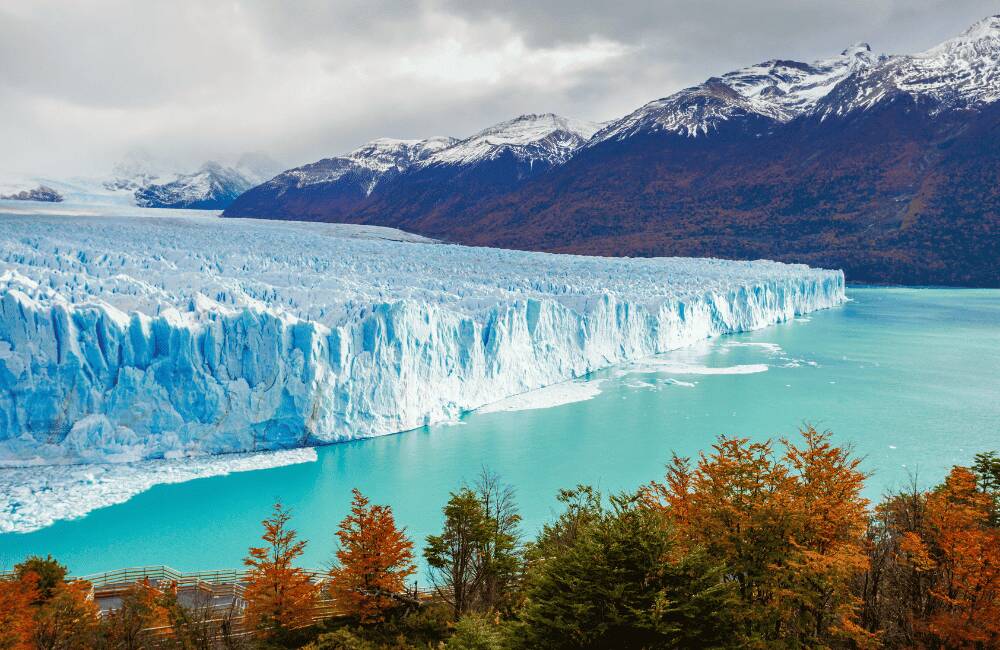
The beauty at the end of the world: Ushuaia
Argentina has the unique distinction of hosting the southernmost city in the world: Ushuaia — a true natural and historical wonder. Its former prison is one of the must-see attractions in Argentina. Beyond that, visitors can enjoy a walk along the waterfront and take part in numerous excursions to visit lakes, hiking trails, and protected natural environments — pristine landscapes unlike anything found elsewhere on the planet.

Sailing the Beagle Channel
A walk along the port of Ushuaia reveals the wonders of the Beagle Channel — its blue waters, the boats docked at the marina, and the Andes Mountains in their southernmost form as a stunning backdrop. So, the next inevitable step is to sail through the Beagle Channel to get a closer look at all its charms.
There are various boat options available: yachts, motorboats, catamarans, and sailboats — all offering the chance to enjoy the main islands of the Beagle Channel, where you can see cormorants, penguins, and sea lions. You’ll also get to visit the Les Eclaireurs Lighthouse, located 20 km from Ushuaia and one of the southernmost lighthouses in the world — though it should not be confused with the Lighthouse at the End of the World, which is 200 km away and inaccessible due to its remote location.
How many days are needed to see Argentina?
To truly experience and enjoy Argentina’s top attractions, the recommended time is 15 days. The long distances and potential delays at airports can easily eat into your schedule. While it’s often said — and rightly so — that you should take a month to explore Argentina, that’s not always possible, even if it’s ideal. Still, 15 days is a typical vacation span, and it’s more than enough to see a lot, including the north-to-south journey outlined in this article.
Travel insurance for Argentina
What to see in Argentina in 5 days
Of course, sometimes we have to work with the time we have. If you only have five days to visit Argentina, it’s still entirely possible to make the most of your trip.
One of those days — depending on your flight schedule — can be spent in Buenos Aires. It’s the perfect time to take a stroll, book a city tour, and enjoy a traditional dinner in the capital.
After that, you have several options — and each comes with good and bad news. You could choose to visit Argentine Patagonia, the northwest region, or Iguazú Falls. The good news is that with any of these options, you can enjoy a reasonably complete trip. The bad news is that by choosing one, you’ll miss out on the others (except the Falls, which are easier to combine with another destination). Another approach is to combine two destinations — visiting three in five days is highly unlikely — and while this will broaden your experience of Argentina, it will also make for a packed itinerary.
Below are the most recommended combinations for a five-day trip to Argentina.
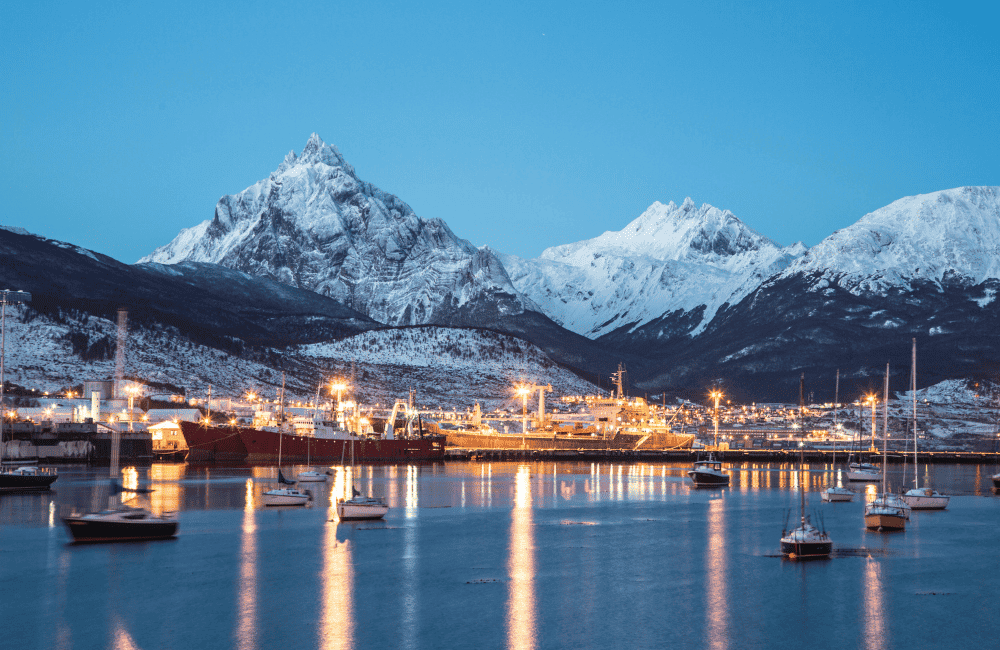
What to see in Argentina in 5 days: glaciers and waterfalls
Glaciers and Iguazú Falls
This is the most common itinerary: one day visiting Iguazú National Park and three days exploring Los Glaciares National Park, including two days of sailing among the major glaciers. You’ll still have one extra day for shopping, an alternate excursion in El Calafate, or further exploring Buenos Aires.
Glaciers and Ushuaia
Spend two days visiting the glaciers — one at Perito Moreno Glacier and another covering the dry glaciers, Spegazzini and Upsala — and two days in Ushuaia: one for the city itself and one for sailing the Beagle Channel.
Glaciers or Ushuaia with the 7 Lakes Route
In this version, you swap Ushuaia for two days exploring the 7 Lakes Route, including the detour to visit Lake Nahuel Huapi. It’s recommended to spend one night in Villa La Angostura and another in Bariloche. Alternatively, you can swap the glaciers for Ushuaia, depending on your preferences.
Iguazú Falls and Northwest Argentina
Spend one day at Iguazú Falls and three days exploring the small towns of northwest Argentina. Focus on Jujuy Province, especially the Hill of Seven Colors. Ideally, spend one night in each of Jujuy’s three most beautiful towns: Tilcara, Purmamarca, and Humahuaca.
What to see in Argentina: the most interesting provinces to visit
Argentina is made up of 24 provinces, and these are the 10 most interesting ones to visit:
Misiones
With Iguazú Falls as its crown jewel, Misiones also offers attractions like the Yerba Mate Route — where visitors can learn the secrets of Argentina’s most popular drink, which is gaining fans around the world. You can also visit the Jesuit ruins of San Ignacio and the capital city, Posadas, known for its beautiful colonial architecture. From north to south, the green jungle and red soil define Misiones’ iconic color palette.
Jujuy
Jujuy is the most deeply rooted province in northwest Argentina when it comes to indigenous culture, traditions, and customs. Ancient practices are still alive in the picturesque small towns of the region. With the Quebrada de Humahuaca, the unmissable Hill of Seven Colors, Quechua spoken as a living language, and the must-visit towns of Purmamarca, Tilcara, and Humahuaca, Jujuy is rich in both natural beauty and cultural heritage.
Tucumán
Its capital, San Miguel de Tucumán, is the largest city in northwest Argentina and home to significant colonial history and heritage. Though small in size, the province includes the Calchaquí Valleys — which it shares with neighboring provinces — and offers numerous hiking trails through mountains and plains.
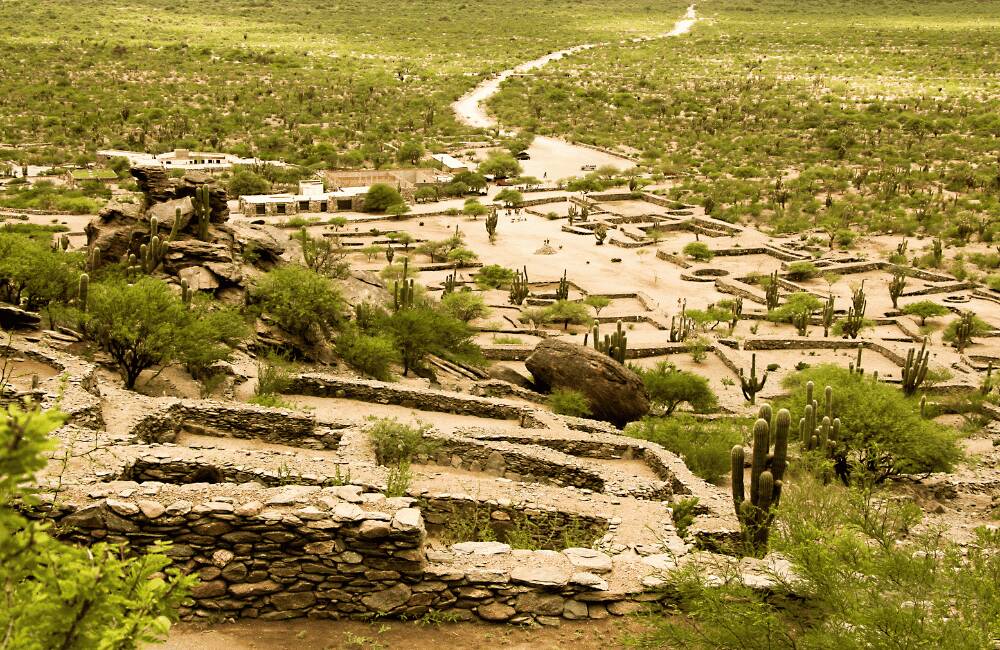
Salta
While Jujuy is unmatched in terms of natural beauty, the nearby province of Salta can certainly rival it. From its capital — a beautiful colonial city that holds genuine archaeological treasures (such as the three mummified Inca children known as the Llullaillaco mummies, preserved in perfect condition) — Salta offers a rich variety of landscapes and must-see spots. For wine lovers, there’s Cafayate, known for its scenic vineyards and excellent wines. The province is also home to towns that seem frozen in time, like Iruya and Cachi. And as if that weren’t enough, Salta is the departure point of the famous Train to the Clouds, which begins in San Antonio de los Cobres.

Río Negro
This is the province where you’ll find San Carlos de Bariloche, one of the most charming cities in Patagonia, nestled on the shores of Lake Nahuel Huapi. But Río Negro has even more to offer: numerous ecological reserves, rural tourism routes through forests and mountains, and the most popular beach in Patagonia — Las Grutas — where warm ocean currents make for pleasant summer swimming.

Neuquén
Home to the famed Route of the 7 Lakes, Neuquén also features the greenish-hued Limay River and two essential cities: Villa La Angostura and San Martín de los Andes. The province boasts a large number of protected natural areas and a captivating circuit of volcanoes, including the standout Lanín Volcano. For fans of skiing, snowboarding, and other winter sports, Neuquén is a perfect destination during the colder months.
Santa Cruz
This province is home to El Calafate, with Lake Argentino and its spectacular glaciers. It also includes El Chaltén, another must-see Patagonian town, where the southern section of the Andes reveals unparalleled beauty. Additionally, Santa Cruz is a great place to enjoy traditional Patagonian grilled lamb.
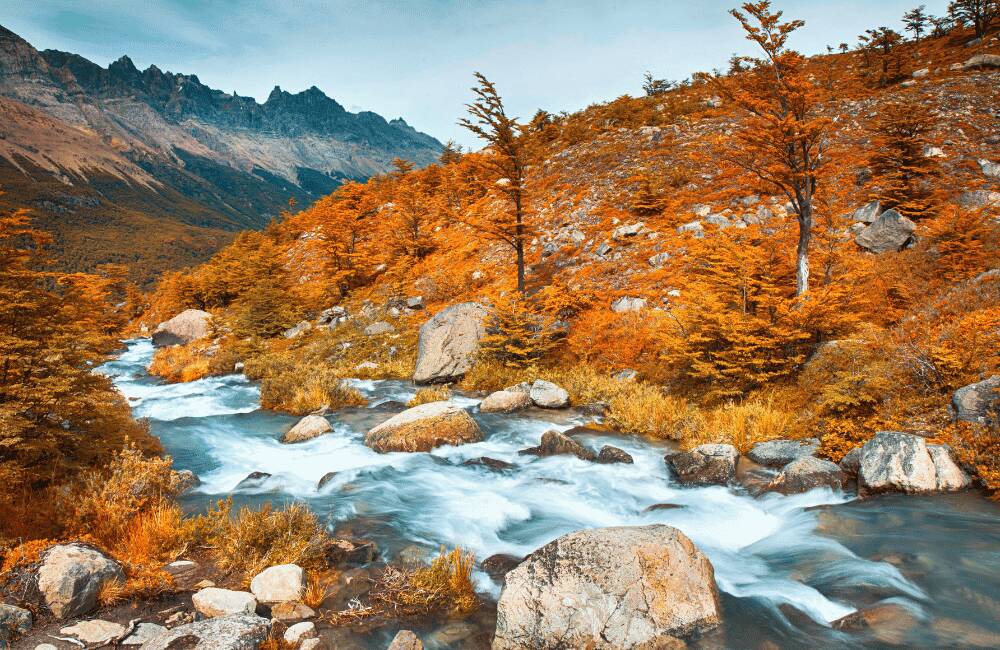
Tierra del Fuego
Legend has it that Spanish explorers were astonished when they began to sail past these shores and saw fires lit by the native inhabitants — hence the cinematic name “Tierra del Fuego.” Though some say it was actually smoke signals rather than open flames, the name stuck. This province contains the world’s southernmost city, Ushuaia, and the islands of the Beagle Channel, home to a unique array of wildlife. For the truly adventurous, cruises to Antarctica can be booked from here.
Mendoza
Argentine wine — especially Malbec — is renowned worldwide, and it all begins in Mendoza, a province nestled against the Andes. Its capital, also named Mendoza, lies close to Santiago de Chile. This is an ideal destination for lovers of wine and gastronomy, but the province also offers tempting mountain getaways like Las Leñas, Luján de Cuyo, and San Rafael.
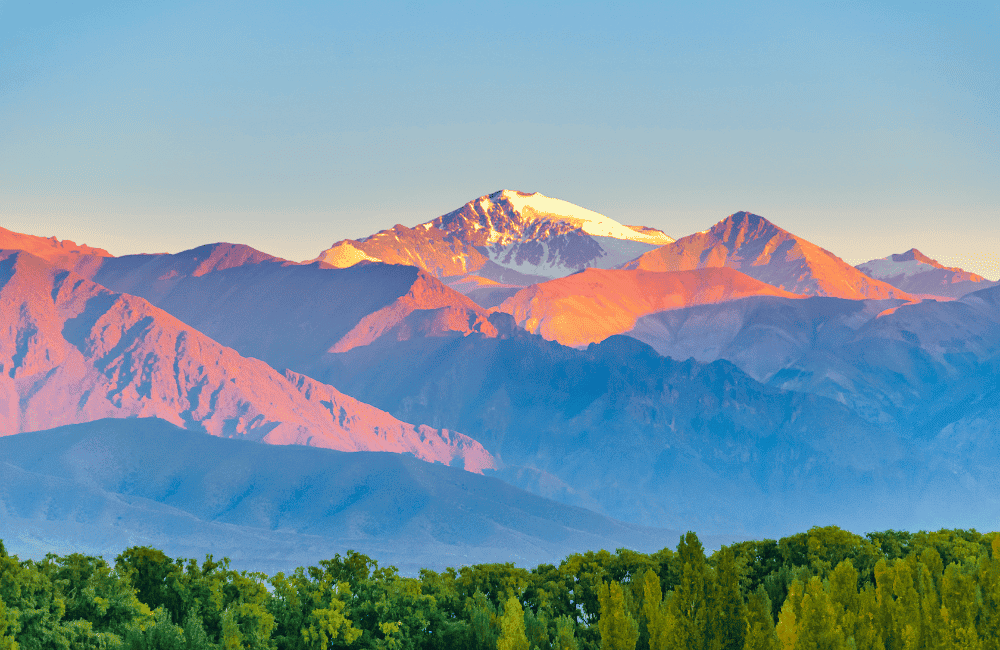
Córdoba
Mountain rivers, lush valleys, rolling hills, and an abundance of nature make Córdoba the perfect spot for relaxed rural tourism. Towns like Tanti, Villa Carlos Paz, La Falda, and Nono offer scenic landscapes and tranquil escapes amid the Sierras.
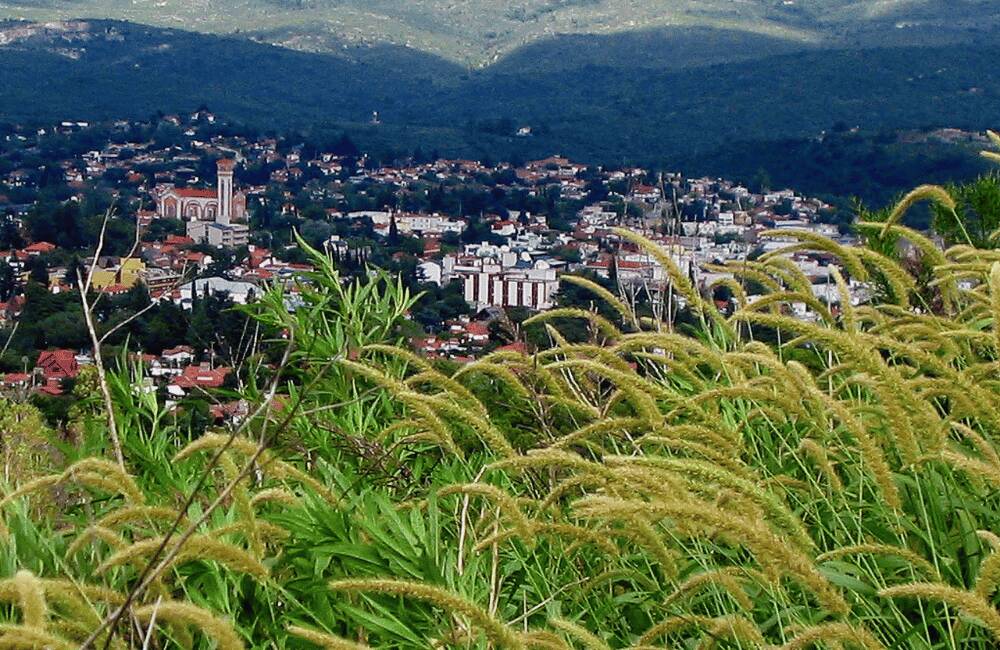
How many days are recommended in Buenos Aires?
Let’s set aside the quick-stop idea and assume you have enough time to truly get to know Buenos Aires. Ideally, you should spend a week in the city to really grasp how one of the world’s most vibrant urban centers lives and breathes.
A theater outing in Buenos Aires is a must — whether it’s a blockbuster show on Corrientes Street or something from the independent theater scene scattered across the city. And afterward, don’t miss out on a hearty slice of pizza porteña, served by the slice and best paired with a cold beer or a glass of Malbec.
When it comes to exploring neighborhoods, the most historically rich areas lie in the southern part of the city: La Boca, San Telmo, and Boedo. Don’t miss Avenida de Mayo, lined with elegant mansions leading to the Casa Rosada, Argentina’s presidential palace. For a more modern vibe, head to the stylish bars and shops in Palermo or Belgrano.
Essential museums in Buenos Aires include the National Museum of Fine Arts, the Latin American Art Museum of Buenos Aires (MALBA), the National Library, the Benito Quinquela Martín Museum, and the Immigration Museum — housed in the former Immigrants’ Hotel, where hundreds of arrivals from Europe and Asia once stayed in the late 19th and early 20th centuries.
Lastly, no visit to Buenos Aires would be complete without attending a football match at either La Bombonera or El Monumental — two iconic stadiums where the passion of the fans is just as thrilling as the action on the field.
If you have fewer days to explore Buenos Aires, all of these recommendations can be condensed, and a three- to four-day visit can still offer a rich and satisfying experience.
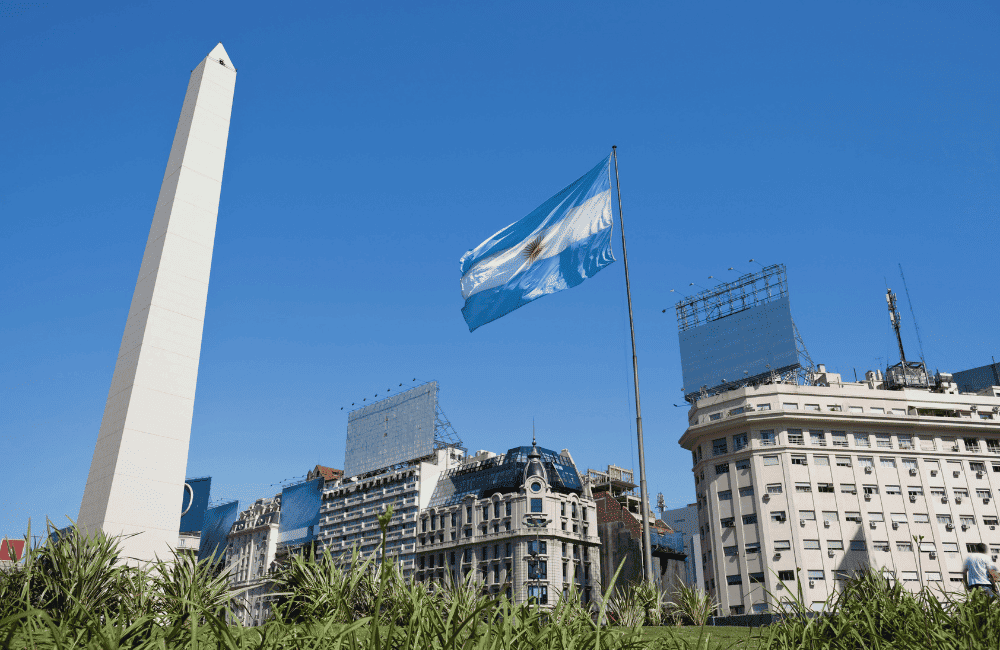
What is the best time to travel to Argentina?
Argentina’s vast diversity in geography, urban life, and landscapes is also reflected in its calendar. Depending on what you want to see and what you enjoy, there’s something interesting to experience in Argentina all year round.
However, the austral spring — particularly the months of September and October — can be considered, on average, the best time to travel to Argentina. It offers the perfect balance in terms of climate: the northern region isn’t excessively hot during the day, and the Andean nights aren’t as bitterly cold as they are in other seasons. In the south, days start to lengthen in Ushuaia, making them far more enjoyable than in winter, when daylight is scarce. September and October are also ideal for visiting the glacier and lake regions, where the weather becomes more temperate. Finally, these two months are peak season for whale watching in Puerto Madryn.
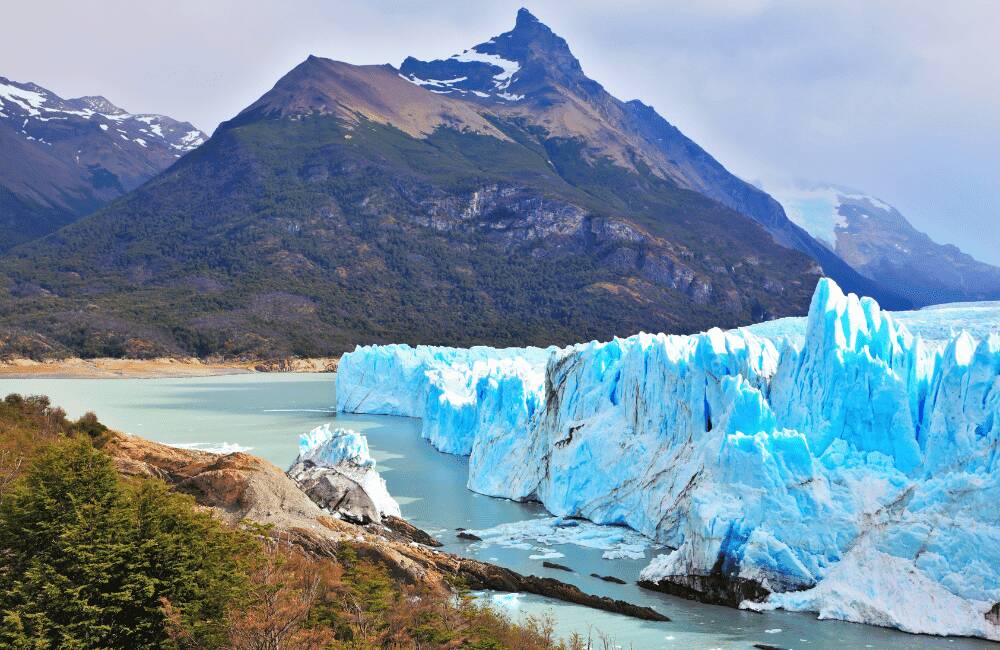
Is it safe to travel to Argentina?
Yes, Argentina is generally a safe country to visit. As with any destination, some areas are safer than others. In Argentina, it’s wise to avoid certain neighborhoods and to take basic precautions — such as not carrying all your cash at once, staying alert when using your phone in public, and being aware of anyone who gets too close.
Discover Argentina safely with Heymondo
Before traveling, it’s wise to learn a bit about the healthcare system at your destination. In Argentina, healthcare is generally efficient, but public resources can be limited. Private clinics are highly recommended as they offer quality care and reliable facilities — but they can be expensive.
That’s why the Ministry of Foreign Affairs advises all travelers to take out travel insurance that includes medical coverage. It’s best to choose a policy with high coverage limits, so you’re protected against any issues that may arise during your trip — avoiding unnecessary stress or financial hardship.
Heymondo’s travel insurance for Argentina includes up to €10 million in medical coverage for illness or accidents — more than enough to enjoy your trip without worrying about health-related surprises.
One of Heymondo’s standout features is its mobile app with 24/7 medical chat, available every day of the year. This app lets you connect in real time with a team of professionals to get your questions answered or receive immediate assistance.Travel with confidence — trust Heymondo and focus entirely on discovering Argentina’s natural wonders.
Featured stories

